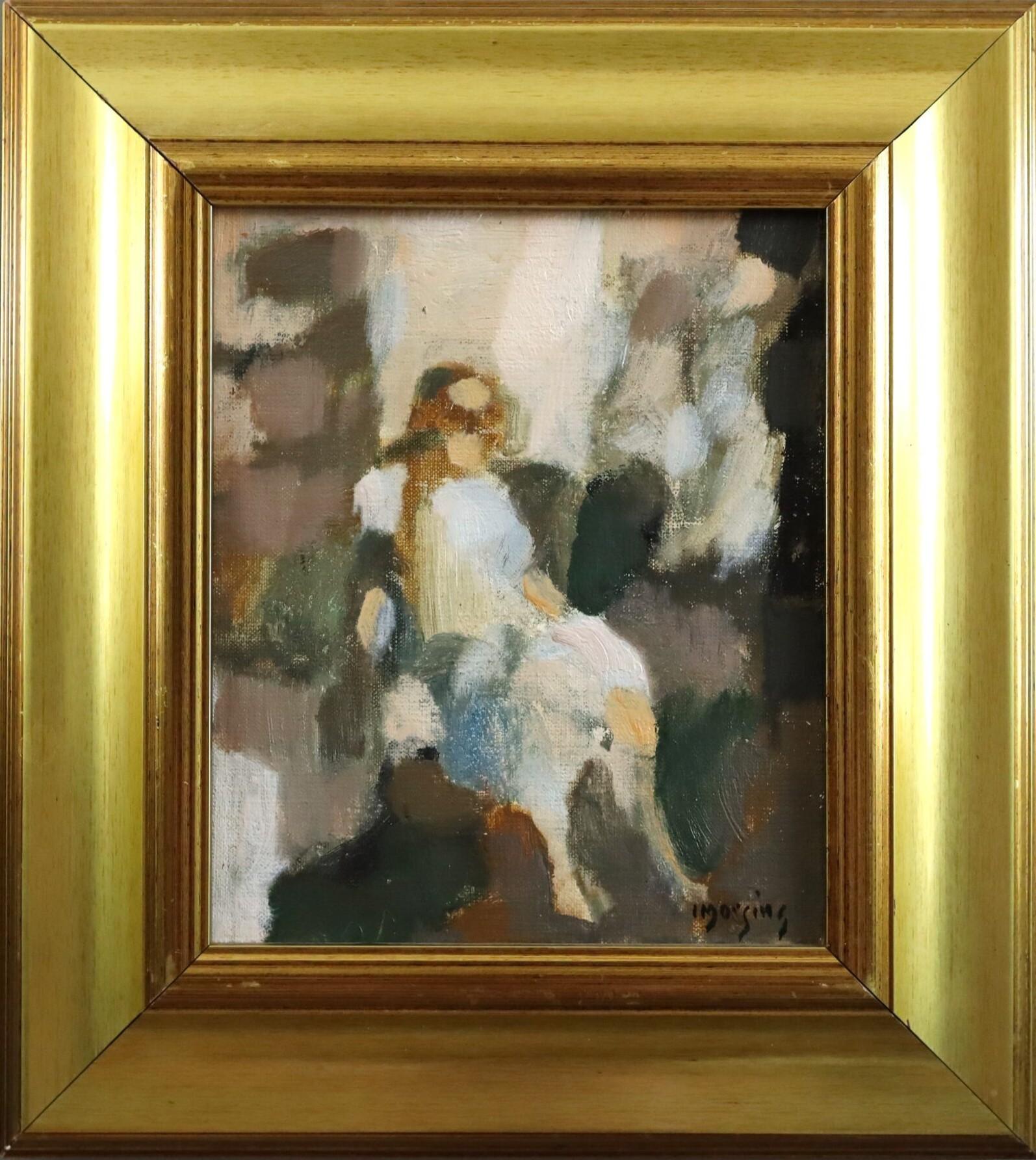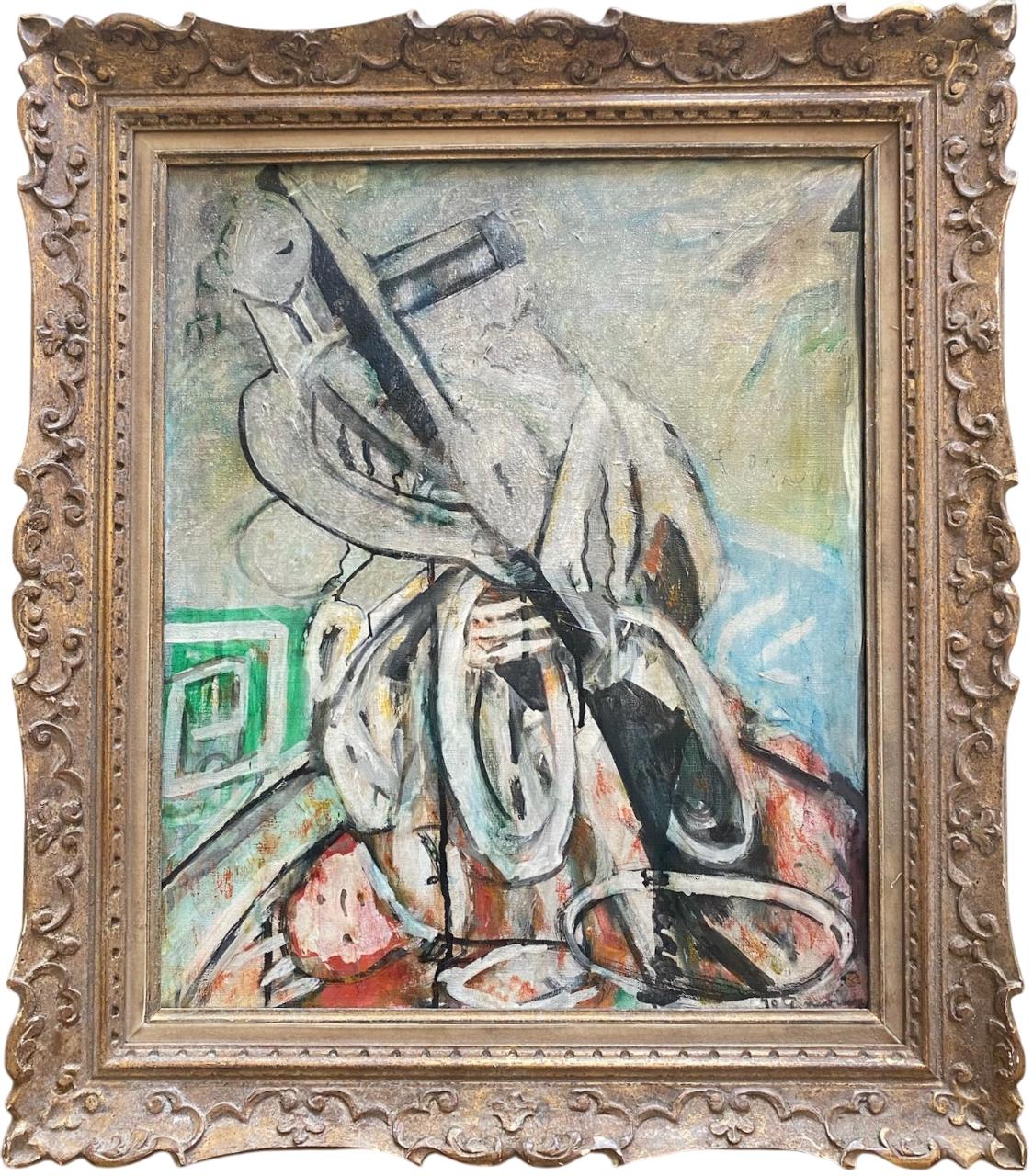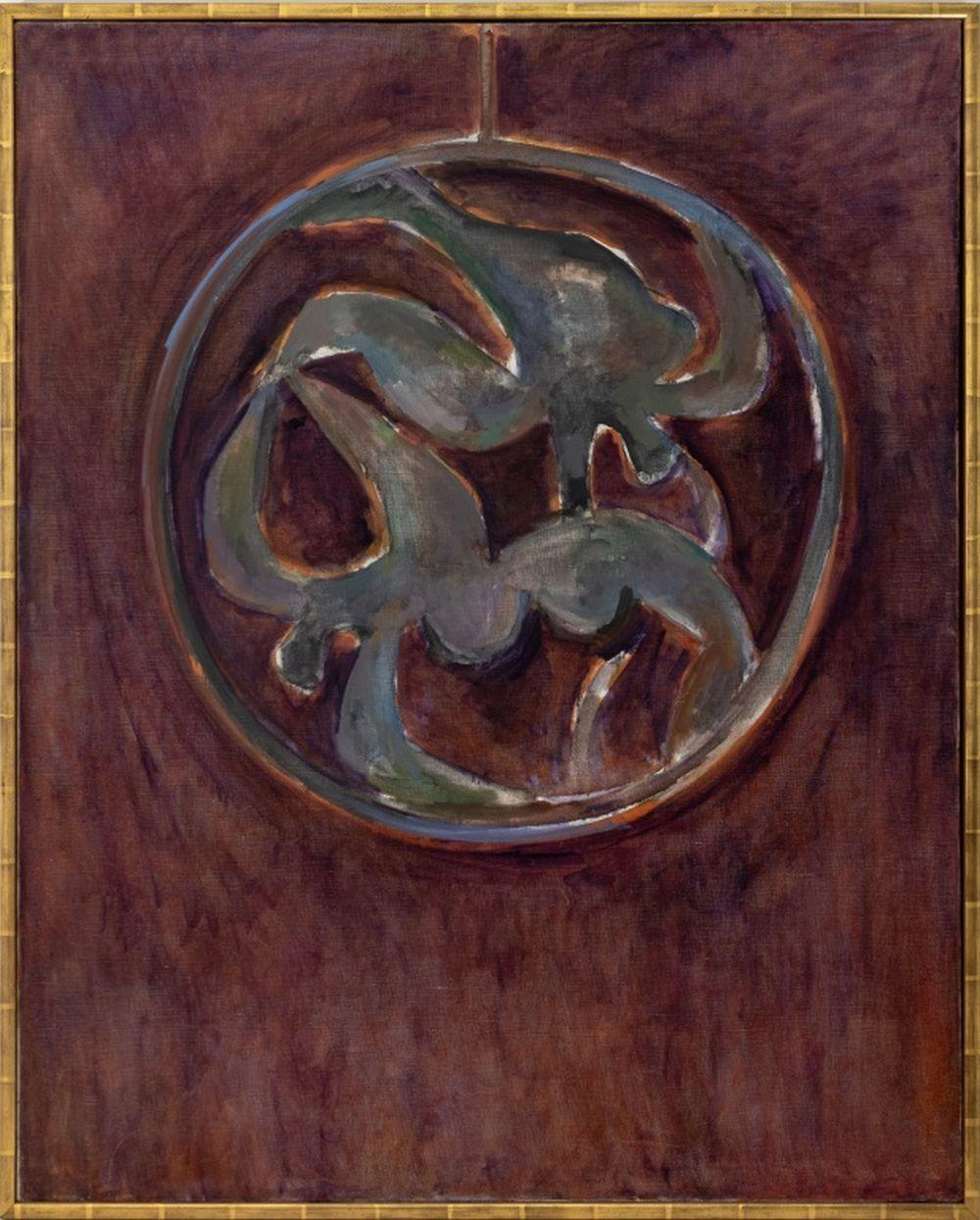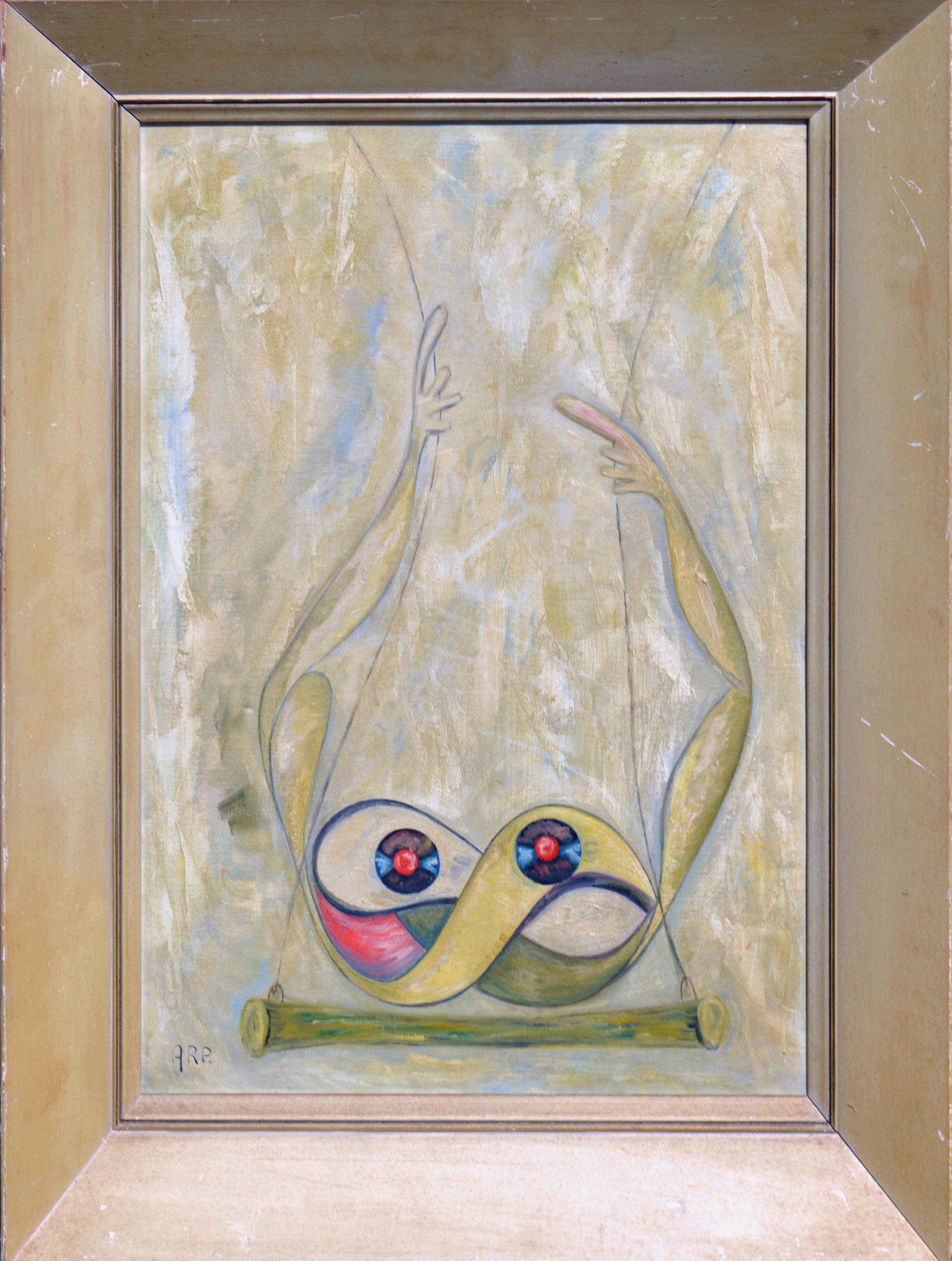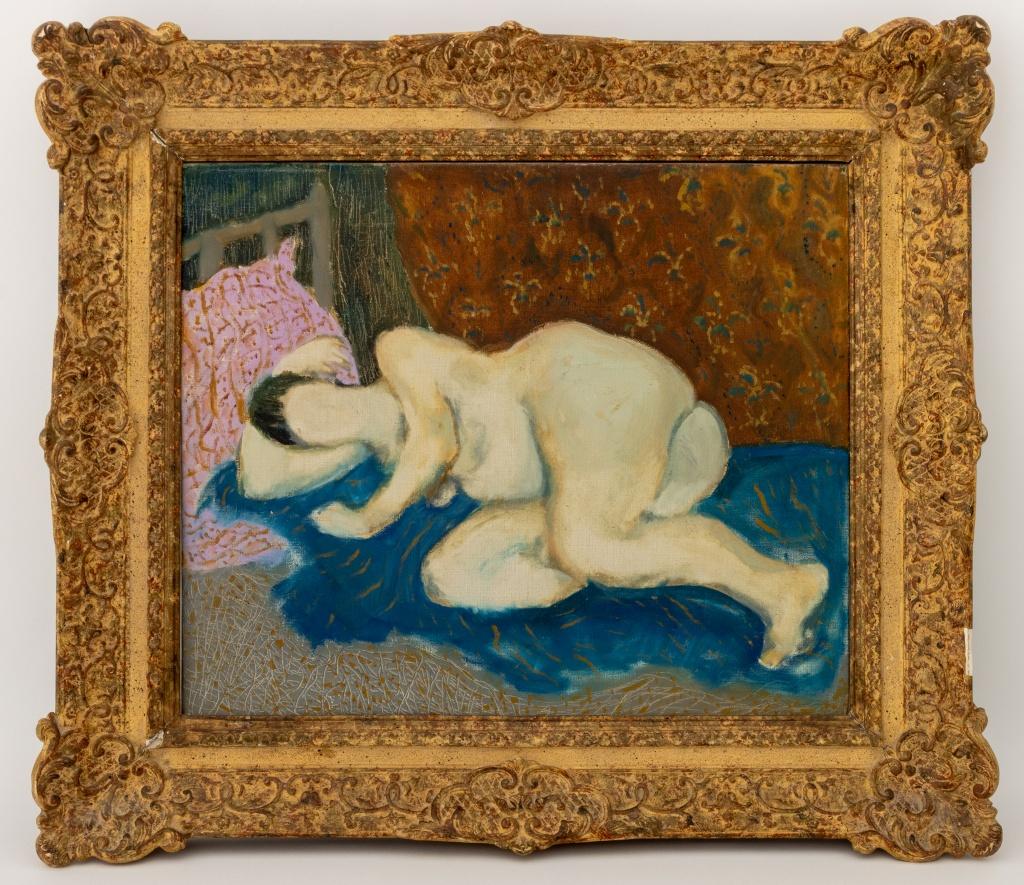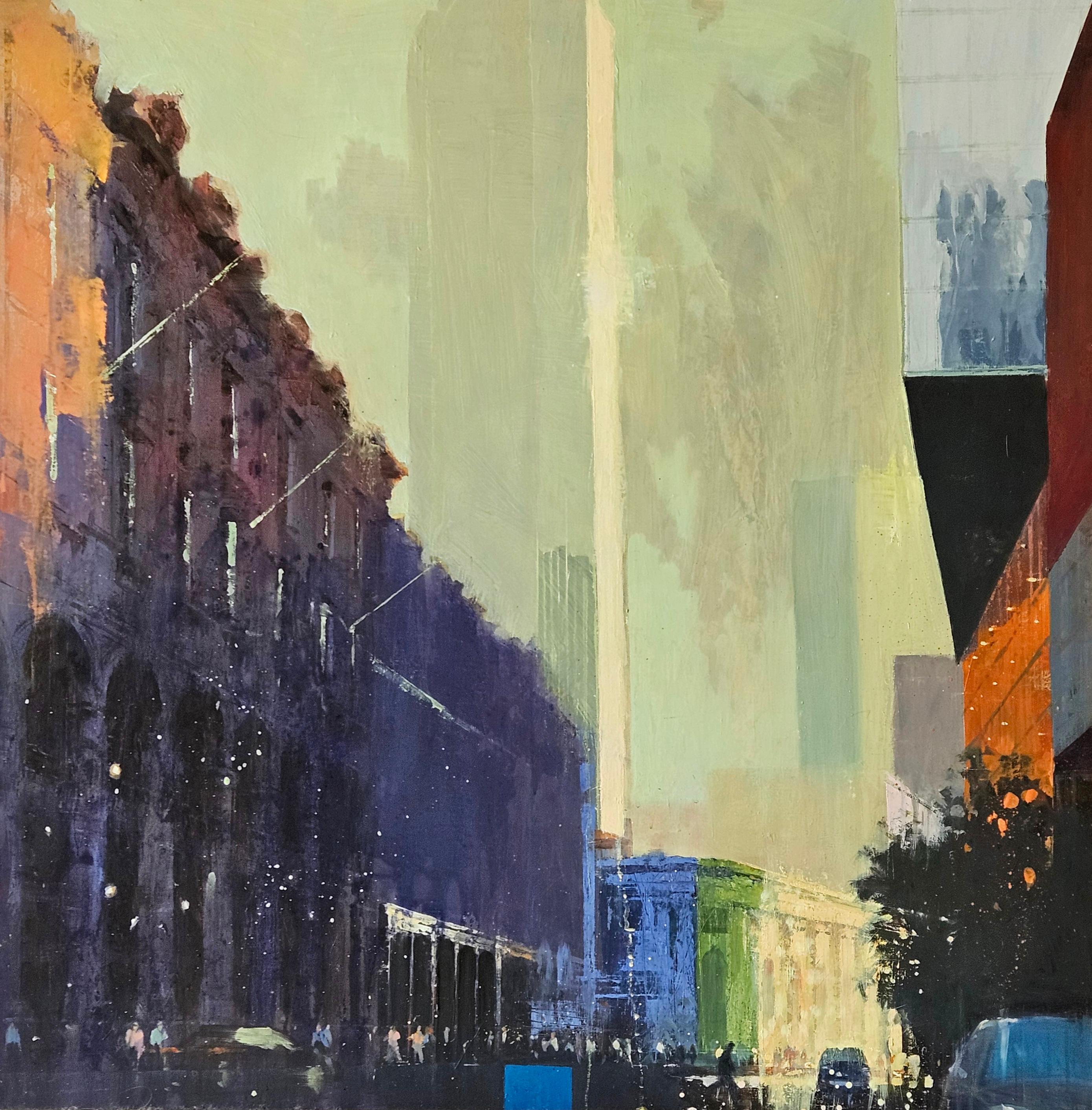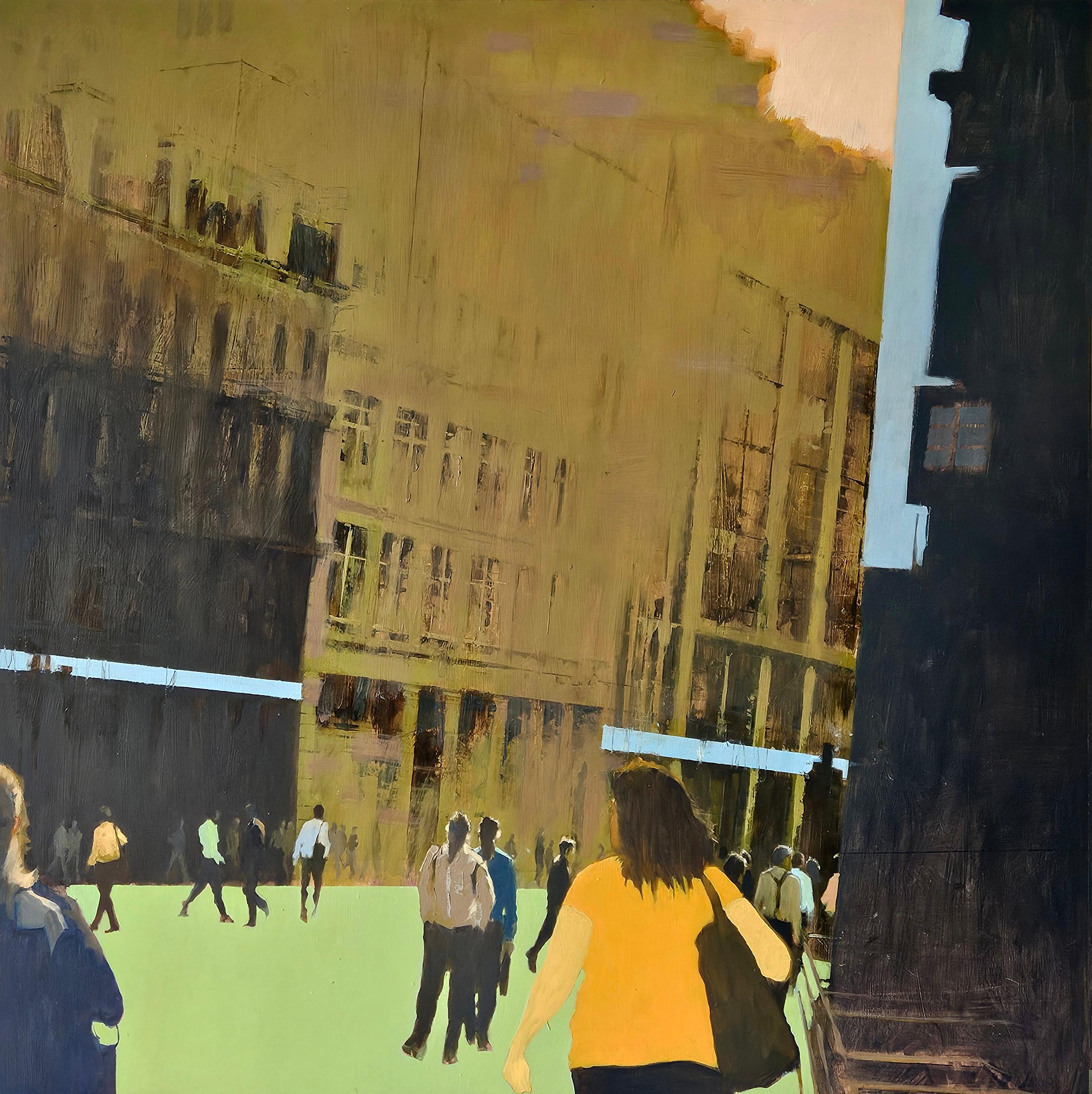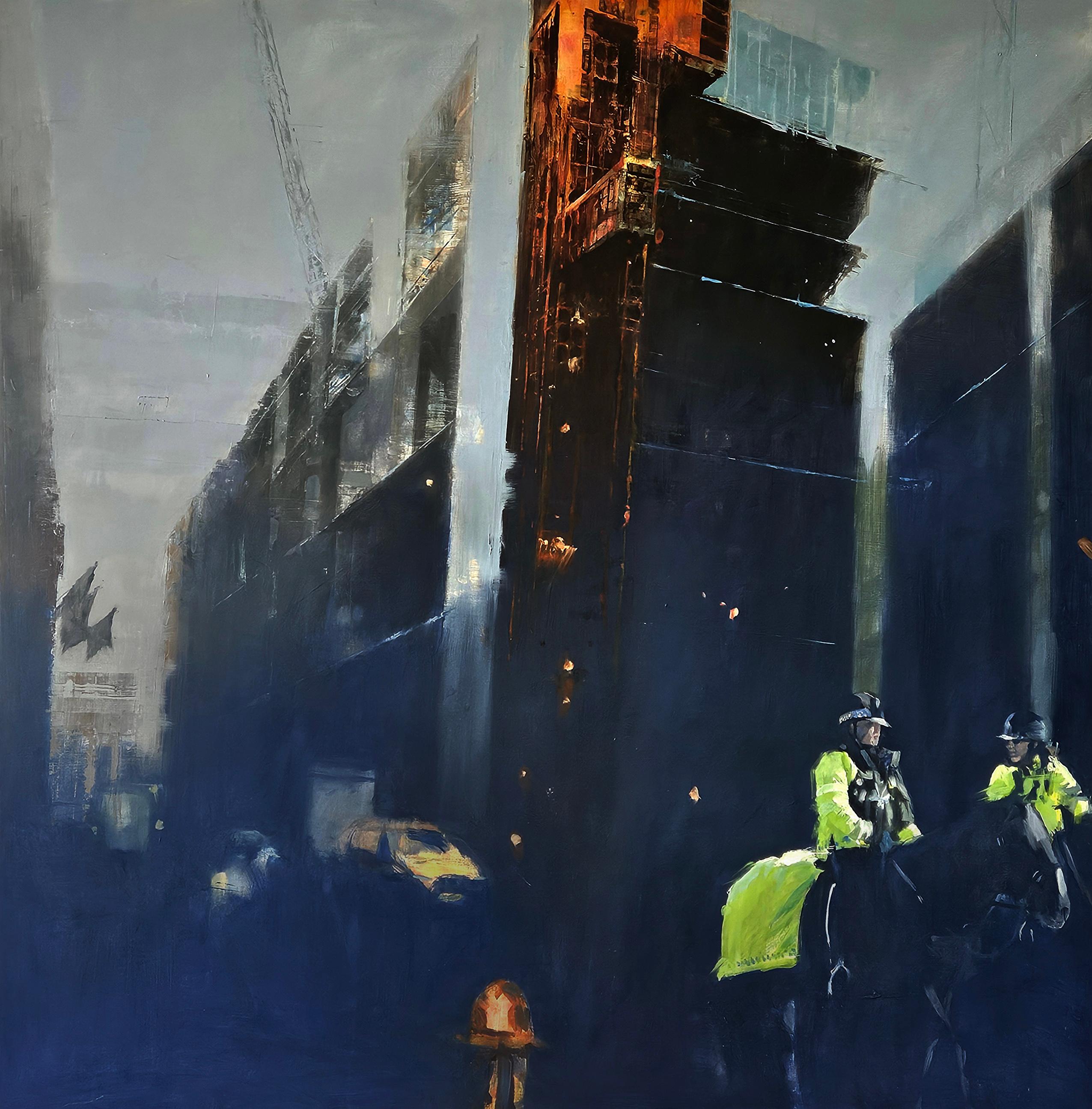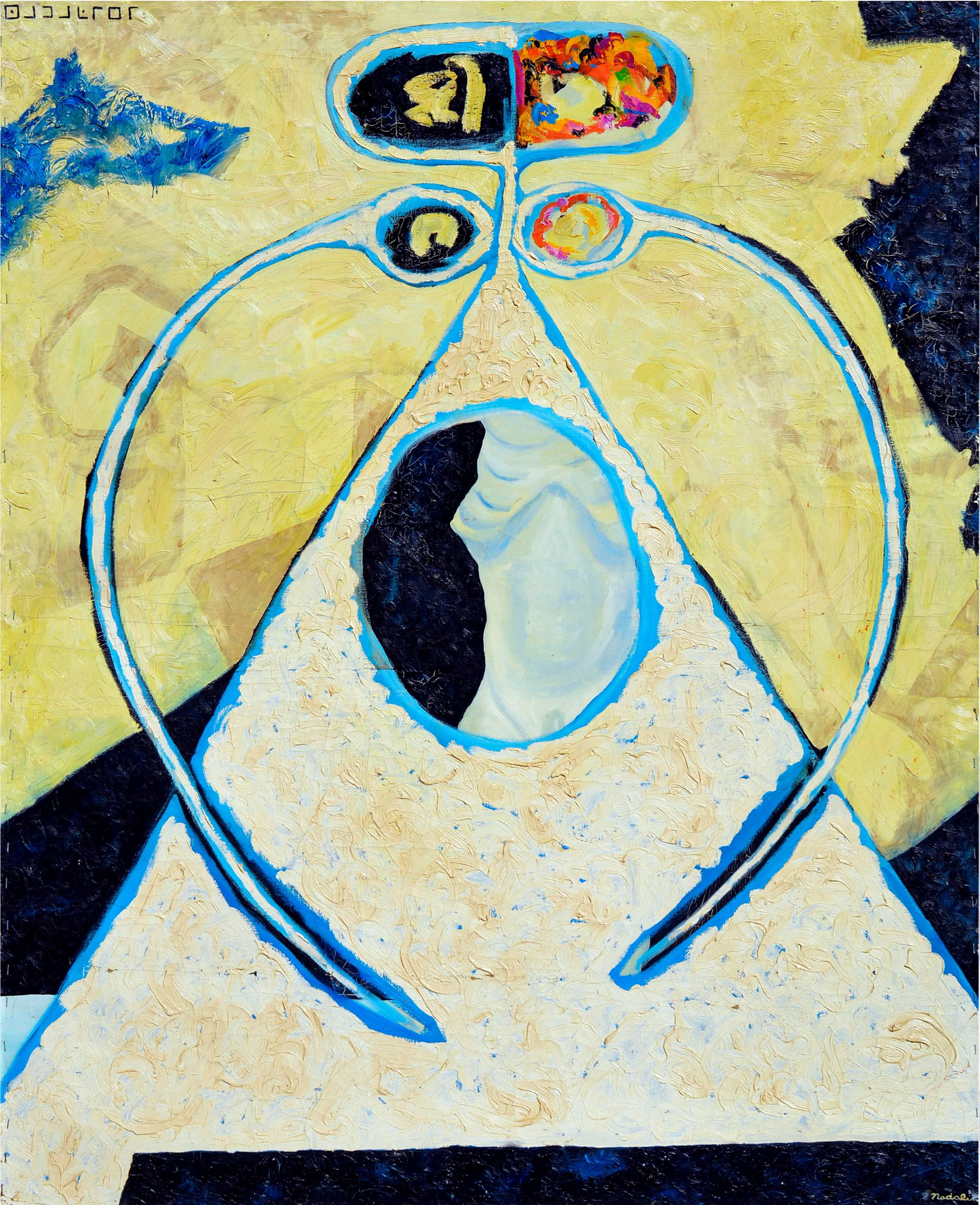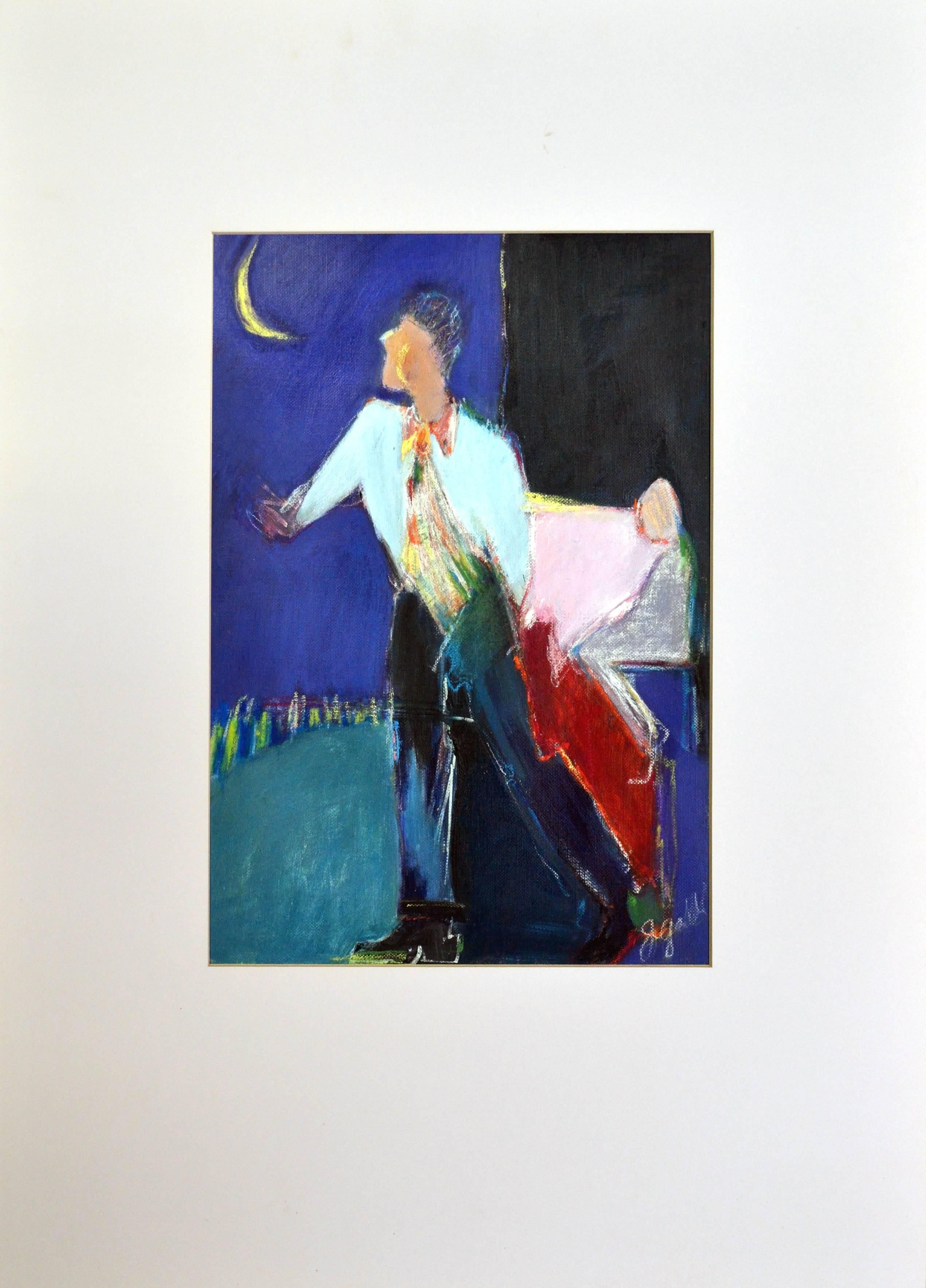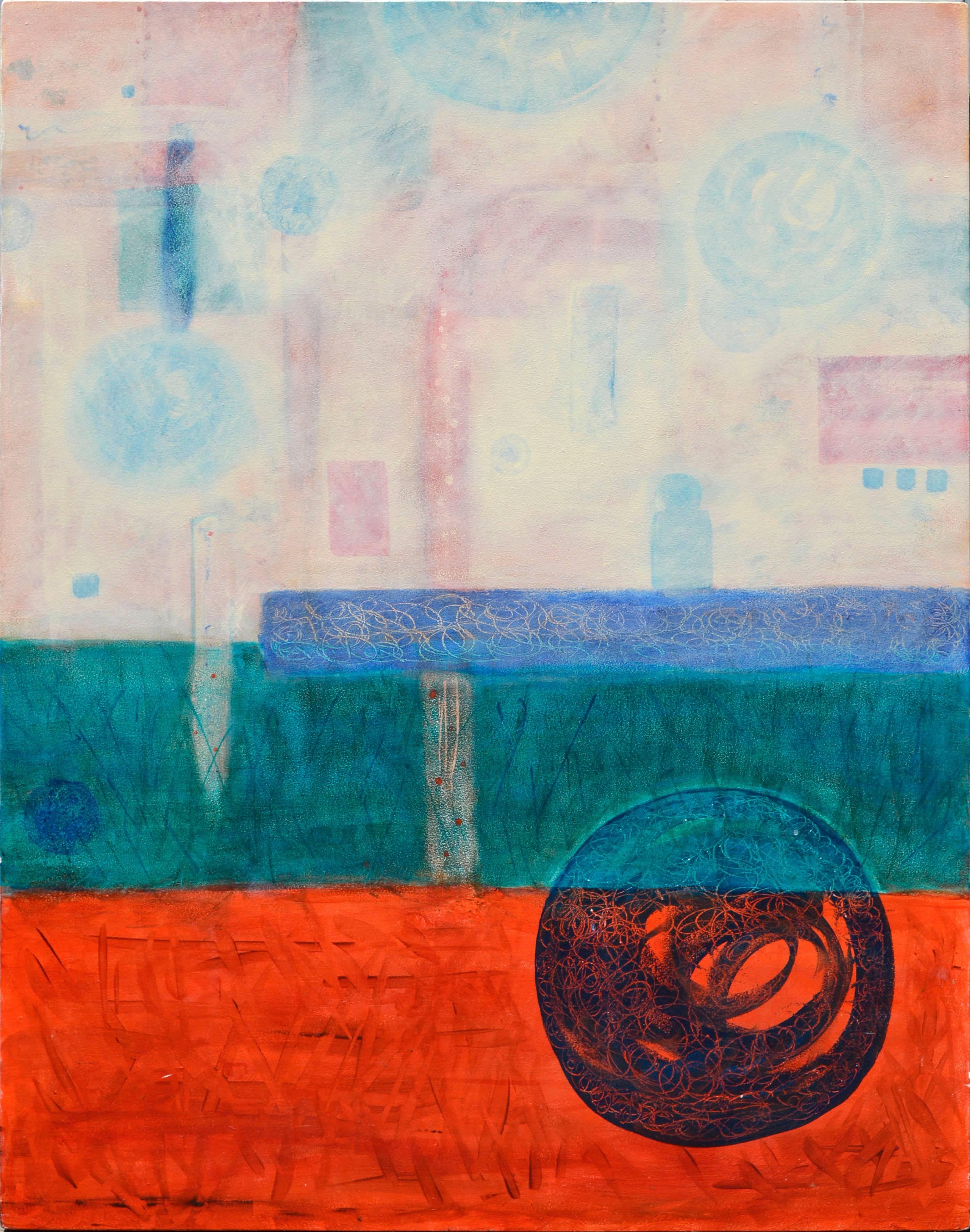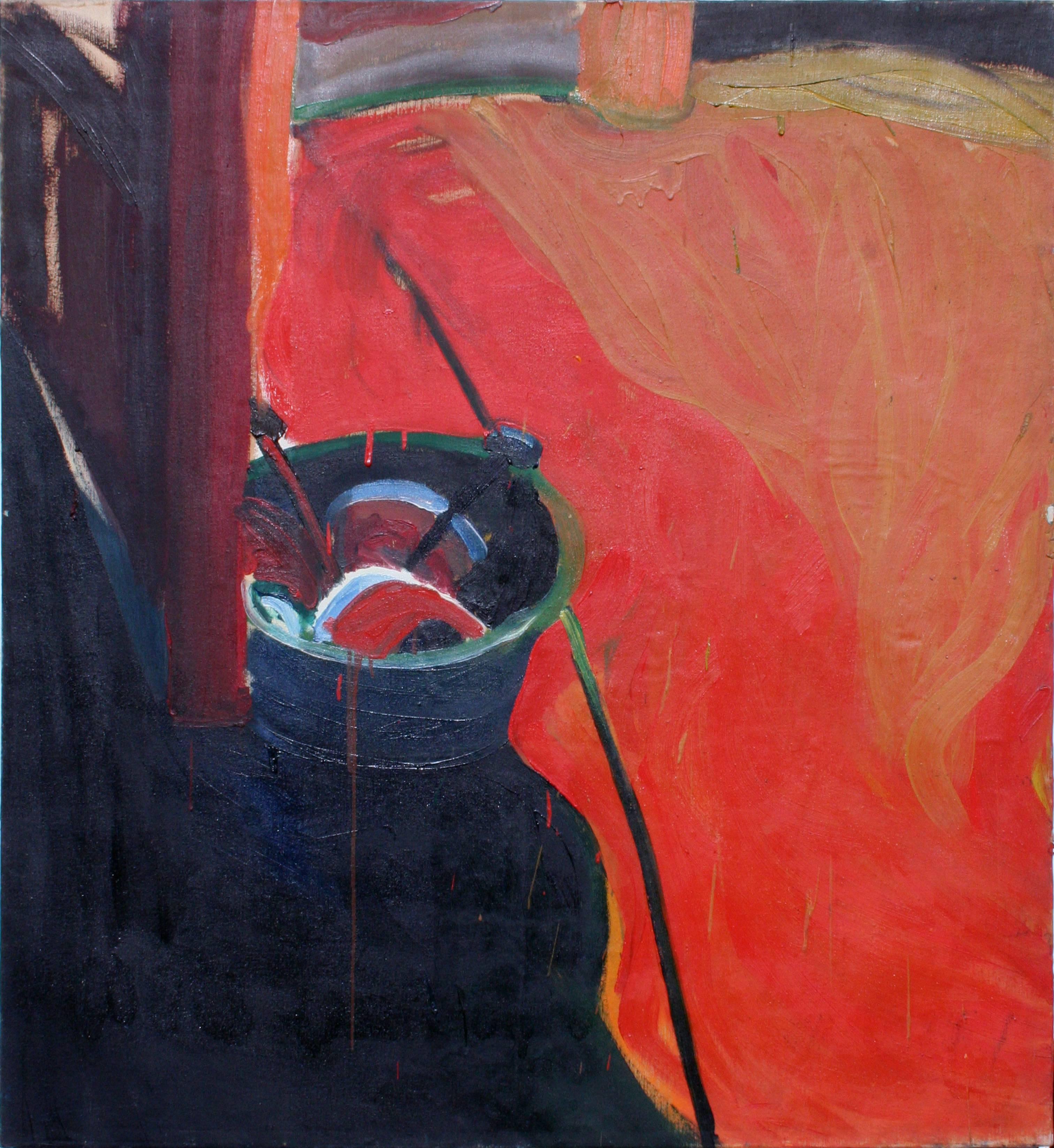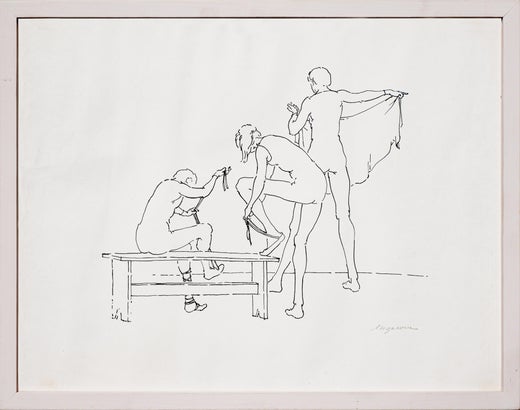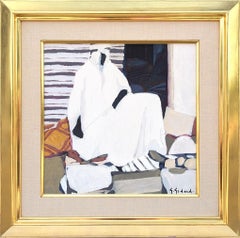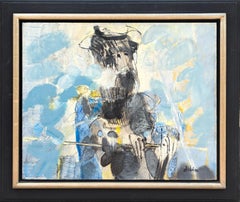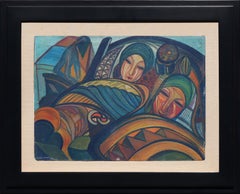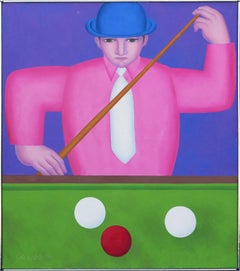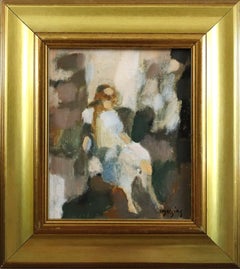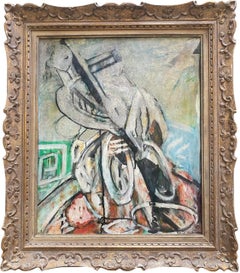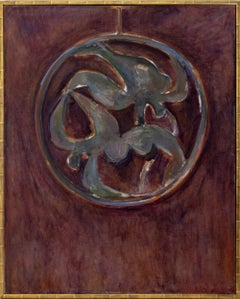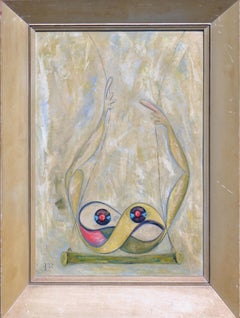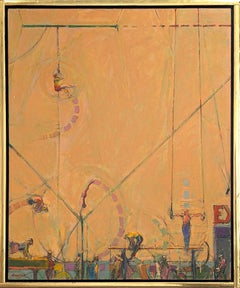
"Gymnast" Modern Pastel Abstract Painting of Athletes Performing Routines
View Similar Items
Want more images or videos?
Request additional images or videos from the seller
1 of 14
William Anzalone"Gymnast" Modern Pastel Abstract Painting of Athletes Performing Routines1970s
1970s
$2,200List Price
About the Item
- Creator:William Anzalone (1935, American)
- Creation Year:1970s
- Dimensions:Height: 31.75 in (80.65 cm)Width: 25.75 in (65.41 cm)Depth: 1.75 in (4.45 cm)
- Medium:
- Movement & Style:
- Period:
- Condition:
- Gallery Location:Houston, TX
- Reference Number:Seller: CA281.2023.0705.54191stDibs: LU551312678082
William Anzalone
William Anzalone was educated in Brooklyn public schools and graduated from the Massachusetts Institute of Technology with a BA in architecture in 1958. He won the Rotch Prize in Architecture in 1958 and practiced architecture in Massachusetts from 1958–59. Anzalone came to Houston, Texas in July 1959 and began teaching at the University of Houston. He also taught briefly at the Museum of Fine Arts Houston School. William Anzalone has had many individual and group shows in Texas, Massachusetts and New York.
(Biography provided by Reeves Antiques)
About the Seller
5.0
Gold Seller
Premium sellers maintaining a 4.3+ rating and 24-hour response times
Established in 1969
1stDibs seller since 2014
871 sales on 1stDibs
Typical response time: 11 hours
Authenticity Guarantee
In the unlikely event there’s an issue with an item’s authenticity, contact us within 1 year for a full refund. DetailsMoney-Back Guarantee
If your item is not as described, is damaged in transit, or does not arrive, contact us within 7 days for a full refund. Details24-Hour Cancellation
You have a 24-hour grace period in which to reconsider your purchase, with no questions asked.Vetted Professional Sellers
Our world-class sellers must adhere to strict standards for service and quality, maintaining the integrity of our listings.Price-Match Guarantee
If you find that a seller listed the same item for a lower price elsewhere, we’ll match it.Trusted Global Delivery
Our best-in-class carrier network provides specialized shipping options worldwide, including custom delivery.More From This Seller
View All"Petite Merchand" Modern Abstract Neutral Toned Seated Merchant Figure Painting
By Gabriel Godard
Located in Houston, TX
Modern neutral toned abstract figure painting by French artist Gabriel Godard. The work features an abstract merchant figure dressed in white robes seated with their wares. Signed in...
Category
20th Century Modern Figurative Paintings
Materials
Canvas, Oil
"L'Hidalgo de la Mancha" Modern Blue Tone Abstract Expressionist Figure Painting
Located in Houston, TX
Modern blue toned Abstract Expressionist figure painting by the French painter Joël Dabin. The work features a central loose figure painting of the main character from Miguel de Cerv...
Category
1990s Modern Figurative Paintings
Materials
Canvas, Oil
Modern Abstract Earth Toned Cubist Inspired Figurative Harvest Scene Painting
Located in Houston, TX
Modern geometric figurative painting featuring Pablo Picasso inspired faces nestled amongst heavily abstracted harvest imagery. Reminiscent of a Cubist style of abstraction, the work...
Category
20th Century Modern Figurative Paintings
Materials
Oil, Board
Colorful Purple, Pink, & Green Modern Portrait of Man Playing Billiards or Pool
By Gerald Garston
Located in Houston, TX
Colorful modern figurative portrait of a man playing billiards or pool by Connecticut artist Gerald Garston. The work features a man in a blue bowler ha...
Category
1970s Modern Figurative Paintings
Materials
Canvas, Oil
Green Toned Abstract Figurative Marathon Runner with Colorful Target Painting
Located in Houston, TX
Green toned abstract figurative painting by Houston, TX artist, Sherry Sullivan. Painting depicts an abstracted figure of a marathon runner with expose...
Category
21st Century and Contemporary Modern Figurative Paintings
Materials
Canvas, Oil
Abstract Yellow and Orange Toned Figurative Grid of Nude Bodies Painting
Located in Houston, TX
Yellow toned abstract figurative painting by French artist Christophe Stora depicting human bodies in a grid and in several postures and motions. This...
Category
20th Century Modern Abstract Paintings
Materials
Canvas, Oil
You May Also Like
Mid Century Modern Mini Abstract Figurative Oil Painting - Woman in Repose
Located in Bristol, GB
WOMAN IN REPOSE
Size: 36 x 32.5 cm (including frame)
Oil on board
A small yet very impactful mid century abstract figurative oil composition, by the established Swedish artist Ivar ...
Category
Mid-20th Century Modern Abstract Paintings
Materials
Oil, Board
Cubist Musician, Abstracted Figure by American Modernist in France Woman Artist
Located in Norwich, GB
A touch of Chagall and a lot of individuality in this singular work by American modernist artist Genevieve. A free spirit, Genevieve White, born 1913 in Idaho, left home at 14 to mov...
Category
1970s American Modern Figurative Paintings
Materials
Canvas, Mixed Media, Oil
The Ring in Plum
By Manfred Schwartz
Located in Astoria, NY
Manfred Schwartz (American, b. Poland, 1909-1970), The Ring in Plum, Oil on Canvas, depicting two acrobats in dangling hoop on purple ground, apparently unsigned, gilt wood frame. Im...
Category
1960s Modern Figurative Paintings
Materials
Canvas, Oil
Mid-Century Modern Abstract Geometric Trapeze Artists by Hilda Arp
By Hilda Arp
Located in Soquel, CA
Fanciful mid-century modern abstract of trapeze artists by Brooklyn artist Hilda Dora Pape Arp (b. 1909). This 1962 highly abstracted depiction of trape...
Category
1960s American Modern Abstract Paintings
Materials
Oil, Linen
$1,725 Sale Price
34% Off
Reclining Nude Woman
By Manfred Schwartz
Located in Astoria, NY
Manfred Schwartz (American, b. Poland, 1909-1970), Reclining Nude Woman, Oil on Canvas, apparently unsigned, gilt wood frame. Image: 14.75" H x 17.75" D; frame: 22" H x 25" W x 2.5"....
Category
Mid-20th Century American Modern Figurative Paintings
Materials
Canvas, Oil
The View North on Bishopsgate
By David Walker
Located in London, GB
Award winning artist David Walker works in both oil paints and watercolours. Before concentrating on illustration and fine art painting David trained and practiced as an architect. A...
Category
2010s Modern Figurative Paintings
Materials
Oil
Recently Viewed
View AllMore Ways To Browse
Vintage Gymnast
Oil Paint Man Nude
Aix En Provence
Holy Family
Oil Paintings Of Jerusalem
Renoir Oil
Renoir Oil Painting
Spanish Dancer Painting
Spanish Dancing Painting
Beach Men
Don Brown Drawing
Figurative French Romantic Paintings
Marilyn Monroe Painting
Wpa Mural
Primitive Oil Paintings
Luxury Oil Paintings
Middle Eastern Paintings
Boardwalk Originals
